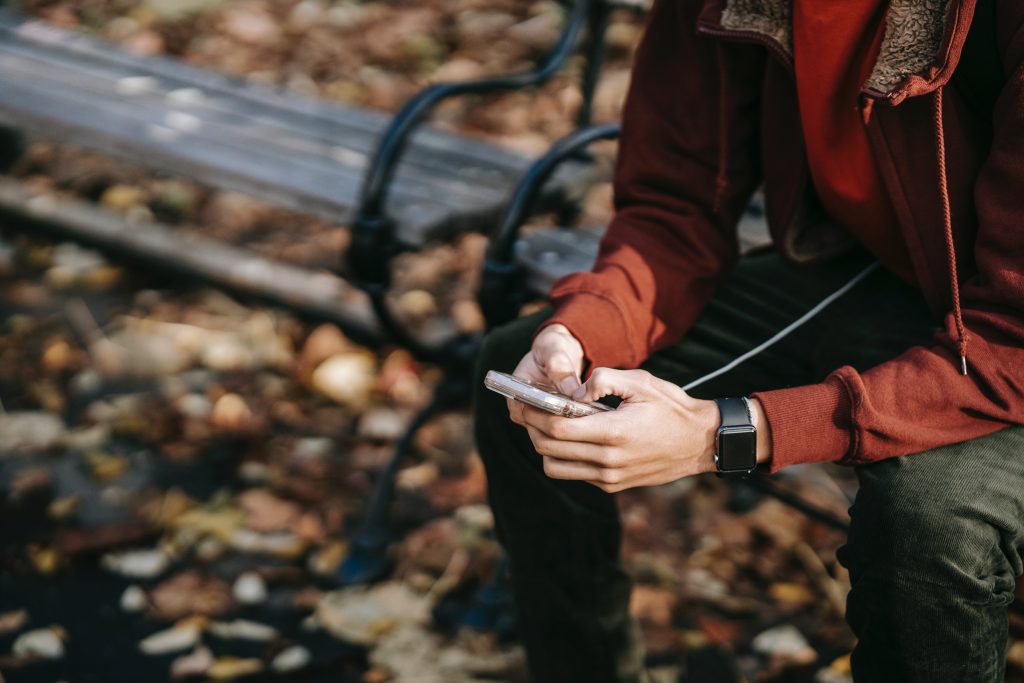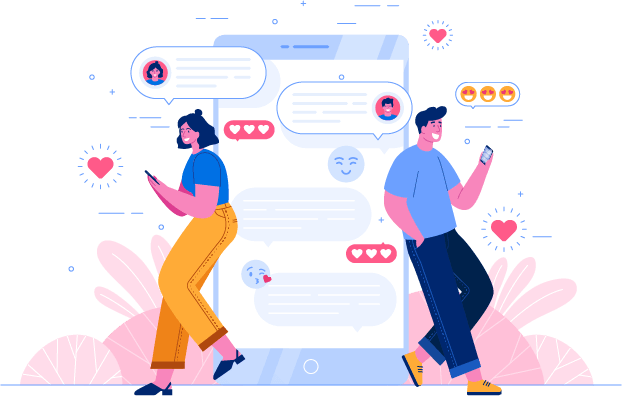Have you ever meticulously crafted a humorous and sincere opening line, only to receive cold silence as a response?
Is it that seemingly intriguing profile that initially sparked hope, but the conversation ended up feeling like falling into a bottomless pit?
Have you ever experienced the sinking feeling of self-doubt as your messages are repeatedly ignored, questioning your own attractiveness?
In the world of digital dating, have you ever found yourself trapped in frustration and loneliness after experiencing silence following a series of greetings?
Today, let’s delve into the possible reasons behind receiving minimal responses when using dating apps and explore ways to improve this situation.
In the era of digital socialization, dating apps have become a common avenue for people to expand them social circles and seek potential partners. However, for some users, the messages they send on dating apps often receive few responses, sparking numerous questions and feelings of frustration.
Here, you can click on the section you want to view and jump directly to it.
3. Dating App Culture and Trends
4. How to shape personal information
1. Phenomenon Interpretation
The phenomenon of receiving few responses when using dating apps may involve various factors, including the impact of social media and digital communication on people’s social interactions:
1)Choice Overload
Dating apps offer a plethora of choices, making it challenging for users to stand out among numerous potential matches. The abundance of choices can lead to more stringent criteria for potential partners, reducing the chances of receiving responses.
2)Superficial Impression Management
In the digital realm, people tend to form initial impressions based on photos and brief personal introductions. This superficial impression management may cause users to be more easily attracted by appearances or photos, overlooking deeper personality traits and common interests.
3)Digital Anxiety
Social media and digital communication may intensify individuals’ anxieties about their appearance and social skills. Users may hesitate to initiate interactions due to concerns that their looks or personalities might not be intriguing enough, resulting in fewer proactive engagements.
4)Lack of Authenticity
On digital platforms, users may lean towards presenting an idealized version of themselves rather than their authentic selves. This discrepancy between the formed impressions and the real-life interaction experience reduces the likelihood of successful matches.
5)Scarcity of Virtual Engagement
Digital communication may lack the emotional experiences of the real world, making users feel more detached and uneasy. This lack of genuine interaction may decrease the level of user engagement, leading to fewer responses.
6)Quick Judgment and Abandonment
On digital platforms, users often make rapid judgments about potential matches without taking the time to delve deeper. This swift decision-making may result in missing out on potentially interesting interactions.
7)Intense Competition
On digital platforms, users often face intense competition, especially in popular areas or highly-used applications. This fierce competition makes it challenging for individuals to stand out, consequently reducing the likelihood of being noticed.
8)Communication Skills
Some users may lack effective communication skills in the digital realm. Factors such as expression, choice of words, and timing of responses can influence whether the other party is willing to engage.
9)Expectation Management
Some users may harbor excessively high expectations on dating apps, anticipating finding an ideal partner quickly. When expectations do not align with reality, it can lead to frustration and disappointment, affecting the willingness to continue active participation.
10)Filter Mechanisms
Users may employ filter mechanisms, such as setting specific criteria or utilizing algorithms to screen potential partners. This filtering may result in only users meeting certain standards receiving responses, leading to fewer interactions.
11)Brief Attention Span
On digital platforms, people’s attention spans are often brief due to a continuous influx of new potential matches. This necessitates users to capture the other party’s attention within a limited time frame, or they risk being overlooked.
12)Differences in Social Expectations
Users may struggle to resonate due to differing understandings of social expectations. One party may anticipate more profound communication, while the other may lean towards casual social interaction, leading to communication barriers.

2| Psychological Aspect
Interacting with others on dating apps involves a complex set of psychological aspects, and parsing these aspects through the lens of psychology and human behavior can help us better understand why we sometimes receive fewer responses.
1. Emotion Filters:
- Psychological Perspective: Individuals typically interpret information through emotion filters. On dating apps, photos, texts, and interactions pass through personal emotion filters, which can lead to filtered or overly interpreted information.
- Human Behavior Perspective: Users may set emotional standards for potential matches, and excessively high or low expectations can affect how conversations unfold.
2. Social Anxiety:
- Psychological Perspective: Some users may face social anxiety, feeling nervous or uneasy about social interactions. This hesitation can lead to reluctance in responding to messages or initiating conversations.
- Human Behavior Perspective: Social anxiety might impact users’ initiative, making it more challenging for them to actively engage on dating apps.
3. Self-Presentation and Self-Esteem:
- Psychological Perspective: Users’ self-presentation on dating apps can be influenced by self-esteem. Concerns about rejection or acceptance may make some users more conservative.
- Human Behavior Perspective: To protect self-esteem, some users might choose silence over potential rejection.
4. Information Overload:
- Psychological Perspective: A large volume of information can lead to information overload, making it challenging for individuals to process all matches and messages.
- Human Behavior Perspective: In information overload situations, users may be more inclined to selectively respond or ignore certain messages, resulting in a decreased response rate.
5. Uncertainty and Decision Fatigue:
- Psychological Perspective: Uncertainty and decision fatigue may make users more cautious and conservative, as they are unsure about the optimal decision-making timing.
- Human Behavior Perspective: Users might experience decision fatigue, causing fatigue in interactions and reducing the willingness to respond.
6. Social Expectations and Matching Purposes:
- Psychological Perspective: Individual social expectations and matching purposes influence behavior on dating apps. Different expectations may lead to varied interaction styles.
- Human Behavior Perspective: Users’ expectations may differ due to diverse social purposes, affecting their willingness to actively engage.
7. Limitations of Virtual Communication:
- Psychological Perspective: Texts and photos on digital platforms are relatively limited, lacking non-verbal elements such as voice, expressions, and body language. This limitation may lead to misunderstandings.
- Human Behavior Perspective: Users might find it challenging to establish deep connections due to the lack of sufficient information, reducing motivation to respond.
8. Impact of Personalized Algorithms:
- Psychological Perspective: Dating app algorithms personalize recommendations based on users’ preferences and behavior. This might create specific expectations for certain types of people, limiting interaction diversity.
- Human Behavior Perspective: Personalized algorithms may lead users to interact more with those who align with their expectations, disregarding other potential matches.
9. Sense of Segregation Between Virtual and Real:
- Psychological Perspective: Connections built in virtual spaces might struggle to extend into reality, creating a sense of segregation between virtual and real interactions.
- Human Behavior Perspective: Users may have concerns about further interaction due to uncertainty about virtual relationships, decreasing the likelihood of responses.
10. Social Comparison and Self-Evaluation:
- Psychological Perspective: Users on dating apps may face social comparison, influencing self-evaluation and confidence.
- Human Behavior Perspective: Low self-esteem and self-doubt might make some users more cautious, avoiding self-presentation on digital platforms and decreasing the likelihood of responses.
11. Interpersonal Relationship Anxiety:
- Psychological Perspective: Anxiety about building new interpersonal relationships might affect users’ interaction styles on dating apps.
- Human Behavior Perspective: Interpersonal relationship anxiety might make users more cautious, avoiding excessive initiative and decreasing the chances of responses.
12. Time and Lifestyle Rhythms:
- Psychological Perspective: Busy lifestyles and rhythms might result in users spending less time on dating apps, impacting interaction frequency.
- Human Behavior Perspective: Users may selectively respond to messages due to time constraints, leading to a decrease in response rates.
13. Communication Skills and Misunderstandings:
- Psychological Perspective: Differences in communication skills can lead to misunderstandings. Some users may feel communication barriers, reducing the likelihood of responses.
- Human Behavior Perspective: Users might be cautious in communication due to fear of being misunderstood, reducing the likelihood of proactive responses.
14. Social Fatigue:
- Psychological Perspective: Excessive social interaction may cause users to experience social fatigue, lowering their willingness to participate in interactions.
- Human Behavior Perspective: Users might reduce their activity on dating apps due to social fatigue, resulting in fewer responses.
15. Language and Cultural Differences:
- Psychological Perspective: Users from different language and cultural backgrounds may face language barriers and cultural differences, leading to misunderstandings and communication difficulties.
- Human Behavior Perspective: Users might feel discomfort due to cultural differences, reducing the inclination to respond.
16. Personal Space and Boundaries:
- Psychological Perspective: Maintaining a certain level of personal space and boundaries is crucial for some users. Some users might selectively respond to messages to preserve personal space, reducing response rates.
- Human Behavior Perspective: Users may choose to respond selectively to maintain a certain level of personal space, decreasing response rates.
17. Humor and Lightheartedness:
- Psychological Perspective: Humor and lightheartedness play a significant role in communication, but their effectiveness may vary due to individual understanding and acceptance of humor.
- Human Behavior Perspective: Lack of shared humor may lead to awkward communication, reducing the likelihood of responses.

3|Dating App Culture and Trends
The culture and trends of dating apps, influenced by the digital era, exhibit unique features that may impact interactions between users:
1. Brief Attention Span
Dating apps often present users with a plethora of potential matches, resulting in a very brief attention span. Users may swiftly browse through numerous potential partners and make decisions in a short amount of time, leading to rapid judgments and selections.
2. Surface-Level Communication
Due to the abundance of information, communication on dating apps tends to revolve around short messages and surface-level introductions. Users may prefer quickly understanding each other’s appearance and basic information, limiting the depth of communication. This surface-level communication pattern may encourage users to prioritize physical appearance while overlooking deeper personality traits and interests.
3. Diversity and Choice Overload
Dating apps offer a wide range of choices, including users with various backgrounds and interests. This diversity and choice overload may prompt users to be more selective in screening potential partners, reducing the opportunities for interaction.
4. Instant Gratification
Dating apps emphasize quick matches and instant gratification, creating a sense of urgency among users to find a partner promptly. This culture of instant gratification may influence users’ patience and their desire to establish deeper relationships.
5. Digital Anxiety
Social media and digital communication can intensify users’ anxiety, causing them to overly focus on physical appearance, social skills, and personal image. Users may feel nervous about their performance on digital platforms, affecting their interactive behavior.
In summary, the culture of dating apps emphasizes rapid, concise, and surface-level communication. The trends of diversity and choice overload, as well as the pursuit of instant gratification, may impact users’ abilities to establish deeper connections. Users navigating dating apps may need to adapt to this culture while carefully balancing quick interactions with genuine interpersonal connections.
4|How to shape personal information
Shaping personal information on dating apps is a crucial task because users’ photos, profiles, and conversational styles directly impact how others perceive them. Here are some strategies and influencing factors for shaping personal information on dating apps:
Photos are a crucial factor in making a first impression. Selecting clear, natural, and personality-representative photos can attract others’ attention. Activities and expressions showcased in photos can convey personal interests and emotional states.
2. Complete Profile Information
Profile information offers essential details about users, including interests, hobbies, occupation, and education. Thoughtfully filling in and completing this information can showcase an individual’s multifaceted aspects, allowing others to better understand them.
3. Highlight Personality Traits
Emphasizing personal traits in the conversational style is crucial. Using humor, wit, or unique expressions to convey oneself can attract like-minded individuals.
4. Be Genuine and Honest
The key to shaping personal information lies in authenticity and honesty. Avoid overly embellishing or exaggerating facts to prevent unnecessary awkwardness during actual encounters.
5. Attention to Language and Grammar
The use of language and grammar directly reflects an individual’s education level and communication skills. Using clear and appropriate language helps establish a positive impression.
6. Showcase Interests and Hobbies
Displaying personal interests and hobbies in conversations and profiles can help find individuals with shared interests, increasing the likelihood of a successful match.
7. Timely and Sincere Responses
Maintaining timely responses during conversations demonstrates sincerity and a positive attitude. This contributes to building a good foundation for communication, making the other person feel valued.
8. Mindful and Respectful Language
Using respectful and polite language is crucial. Avoiding offensive language helps establish a positive social atmosphere.
By cleverly utilizing photos, profile information, and conversational styles, users can create an attractive and distinctive personal profile on dating apps, thereby enhancing their attractiveness and increasing the chances of successful matches.
5|Some Stories
In this era of digital socialization, dating apps have become a primary avenue for people seeking love and connections. However, sometimes this path is not as bright as one might expect; instead, it is filled with loneliness and the pain of receiving no responses. Here is a real story of people navigating the world of dating apps.
One day, on a whim, I eagerly ventured into a dating app, only to find myself plunged into the endless pain of receiving no responses. Despite meticulously crafting my profile and sending sincere messages, I failed to arouse the interest of others, leaving me feeling profoundly lonely.
Numerous times, I sat alone in front of the screen, watching others make connections, and I began to doubt my own appeal. Despite adjusting my profile and messages repeatedly, it proved futile. Sweet-looking dating experiences made me feel forgotten in the corners of the digital world.
However, I didn’t give up. By adjusting expectations and strategies, and presenting a more authentic version of myself, I discovered that, though the responses were scarce, they were more genuine and meaningful. The road of no responses taught me to cherish authentic connections, realizing that love is not a digital game but a real encounter.
This experience provided valuable lessons about myself and interpersonal relationships. Whether in the digital world or real life, genuine connections require patience and sincerity. Perhaps, behind the scenes, the story is not just about cold numbers and virtual expectations but a real and warm encounter.
Conclusion
Receiving few responses while using dating apps is a common issue, likely stemming from various factors.
Firstly, the overload of choices and the superficial management of impressions make it challenging for users to stand out among numerous options.
Secondly, digital anxiety and a lack of authenticity create pressure for users when presenting themselves, hindering the establishment of genuine connections.
The trend of quick judgment and abandonment also leads to missed opportunities for potential interactions.
Solutions to address this issue include optimizing personal profiles, changing opening strategies, expanding search criteria, increasing interaction frequency, and reevaluating expectations.
By understanding the root of the problem and proactively making changes, users can enhance their chances of successfully establishing connections on dating apps.

